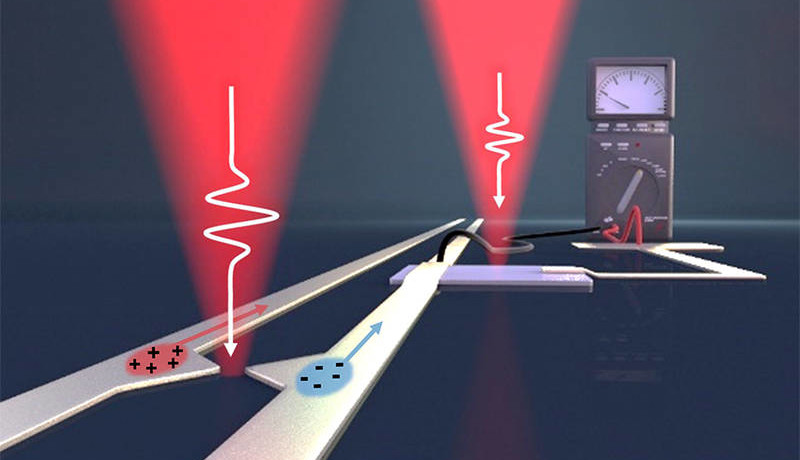Plasmonic hot electron nano-emitters bridge the THz gap (say what?)

Combining ultra-fast femtosecond nano-optics with electronic circuits is difficult because the optical signals with their frequencies of several hundreds of THz are way too fast. “Traditional” nanoscale electronics simply is too slow for down-converting such frequencies to something usable.
Combining ultra-fast femtosecond (fs) nano-optics with electronic circuits is difficult because the optical signals with their frequencies of several hundreds of THz are way too fast. “Traditional” nanoscale electronics simply is too slow for down-converting such frequencies to something usable.
Classical electronics allows frequencies up to around 100 GHz whereas optoelectronics start at 10 THz. The range in between is referred to as the terahertz gap, since components for signal generation, conversion and detection have been extremely difficult to implement.
A new method developed at the Technical University of Munich (TUM) based on so-called plasmonic antennas tries to bridge this gap and allowed the researchers to produce electric pulses in the 10-terahertz range in a sapphire chip.
The article describing the project is pretty technical, but here is what I made of it:
Tiny light-amplifying (plasmonic) asymmetric antennas are placed on the chip’s surface. When hit (excited) by a short (14 fs) near-infrared optical pulse the transmitter antenna emits electrons that fly above the chip’s surface to the receiving antenna, creating an electronic pulse below them in the macroscopic striplines constructed at the surface of the chip. A signal bandwidth of up to 10 THz is expected.
For those who want to know all of it, please refer to the article. Those who want to correct me can post comments below this article.
Image: Christoph Hohmann / NIM, Holleitner / TUM
Classical electronics allows frequencies up to around 100 GHz whereas optoelectronics start at 10 THz. The range in between is referred to as the terahertz gap, since components for signal generation, conversion and detection have been extremely difficult to implement.
A new method developed at the Technical University of Munich (TUM) based on so-called plasmonic antennas tries to bridge this gap and allowed the researchers to produce electric pulses in the 10-terahertz range in a sapphire chip.
The article describing the project is pretty technical, but here is what I made of it:
Tiny light-amplifying (plasmonic) asymmetric antennas are placed on the chip’s surface. When hit (excited) by a short (14 fs) near-infrared optical pulse the transmitter antenna emits electrons that fly above the chip’s surface to the receiving antenna, creating an electronic pulse below them in the macroscopic striplines constructed at the surface of the chip. A signal bandwidth of up to 10 THz is expected.
For those who want to know all of it, please refer to the article. Those who want to correct me can post comments below this article.
Image: Christoph Hohmann / NIM, Holleitner / TUM
